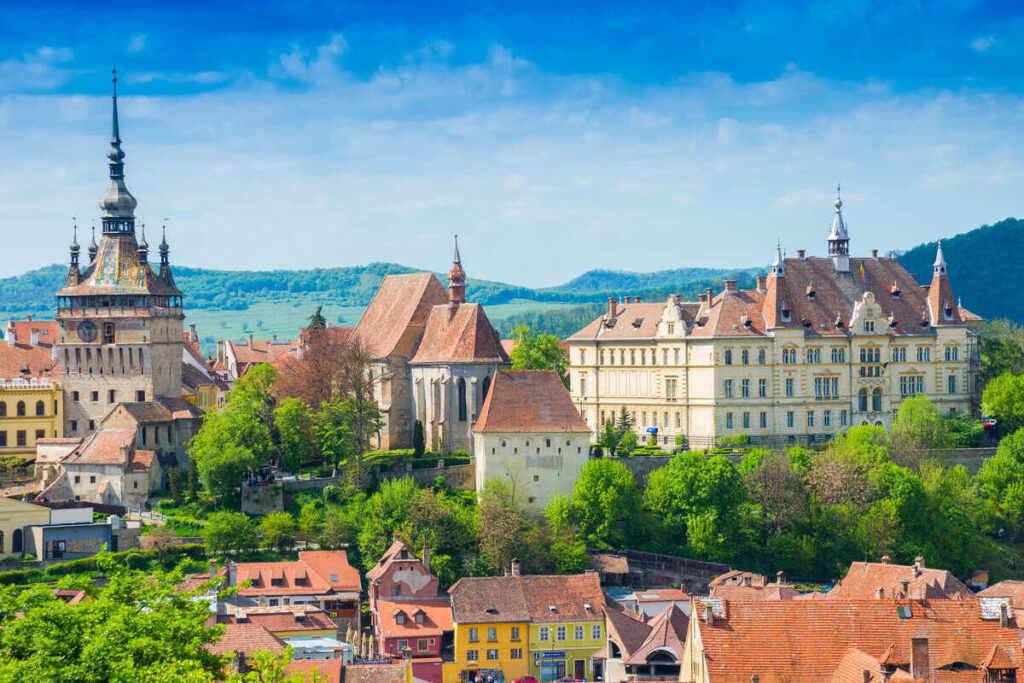Travel Guide
These 2 European Countries Will Join The Schengen Zone Affecting All Travelers Immediately
Last Updated
This month, the Schengen Area is bracing to welcome two additional members: Bulgaria and Romania, two countries that have been part of the European Union since 2007, but up until now, had not been granted access to the border-free zone.


With accession set to take place on April 1, travelers are starting to question the impact and positive as well as negative effects Bulgaria and Romania’s Schengen inclusion will have, particularly for Americans and other non-Europeans.
In short, yes, it will become easier to visit both countries as border checks are lifted, but there’s a far more significant downside to Schengen inclusion that most media outlets are failing to report on:
What Is Schengen?


Schengen is a border-free area a majority of European Union (EU) member states and associates like Switzerland and Norway participate in, where passport checks are not routinely carried out, and you may transit from one country to another as if you’re traveling domestically.
Driving a car from France into Italy is not one bit more difficult than crossing state lines between California and Arizona, for example, as both of these countries are included in Schengen, which comprises 27 countries currently (soon enough, 29).


The additional states in question, Bulgaria and Romania, have been members of the European Union, and thus bound to join Schengen and lift border controls with their partners, since 2007.
However, due to security concerns, they had been prevented from doing so.
What Has Changed For Bulgaria And Romania?
According to European officials, neither of them had reinforced security at their outer borders, and as they are the continent’s south-easternmost frontier—Bulgaria borders Turkiye, for instance—they had been denied Schengen accession despite participating fully in the EU.


Reservations about Bulgaria and Romania’s inclusion in Schengen seem to have finally been addressed, and from April 1, they will be included in the border-free area, though partially.
According to the European Commission, only airside checks will be removed.
Sea and land borders will remain as they are, with passport checks still to be conducted.
Nevertheless, Bulgaria and Romania are to be treated as Schengen countries in every other respect:
They have already started issuing Schengen visas, and the lifting of airside passport controls means the Schengen acquis has to be applied, and this is the part that concerns visitors the most, especially Americans traveling long term in the continent:


How Does This Affect American Travelers?
The Schengen Area is a long-term traveler’s worst enemy if their goal is to country-hop around Europe.
This is mainly because it establishes that if you’ve been present in the territory for 90 continuous days, you must leave and can’t return for another three months.
That would sound reasonable enough, if only a majority of European countries were not part of Schengen: from Spain to Portugal to France to Italy to Germany to Croatia, most tourism hotspots in the continent enforce the 90-day rule.


This means that, if you’ve spent 30 days traveling across a Schengen state such as Italy, you do not get an additional 90-day period once you cross into France, or vice-versa.
Based on the Schengen acquis, you then only have 60 days left, even if it’s a different country.
You Can No Longer Use Bulgaria And Romania To Extend Your Stay In Europe
Prior to March 31, 2023, Bulgaria and Romania were not part of Schengen, allowing tourists to remain in their respective territories for an additional 90 days, irrespective of previous time spent in other European countries.


This meant you could spend a whole three months traveling around the 27 Schengen states, and go straight to Bulgaria or Romania for an additional 180 days (90 days in each).
From April 1, the date of Schengen accession, this will no longer be possible.
If you’ve spent any period of time in another Schengen country, it will count towards the 90 days you’re allowed to stay in either Romania or Bulgaria.
Additionally, they will no longer grant visitors leave to enter individually:


For example, if you’ve spent 30 days traveling around Romania, and you decide to travel south towards Bulgaria, you will only be granted a 60-day stay.
You can understand now how slow travelers, and digital nomads in particular, are not exactly thrilled about the news.
While it’s true the lifting of airside checks will make traveling internationally between those two countries and the rest of Europe a lot easier, with no waiting in immigration queues upon landing or strict ID checks, it effectively means less time in Europe.


For years, Bulgaria and Romania have been used as ‘reset destinations’ for travelers looking to circumvent the restrictive 90-day rule.
Travelers can lie low in those countries before flying back to Western Europe.
No more. It’s the end of an era.
Can You Circumvent The Schengen Rule Entering Landside?
You may be wondering whether the partial Schengen accession (airside only) means that, if you cross the land border into Romania or Bulgaria, you will still be as if you are not crossing an internal Schengen border; thus, you get an independent 90 days.


We regret to inform you that is not the case.
You will be subject to a customary passport check, but you will not receive an entry stamp indicating you’ve entered non-Schengen territory, nor will border guards not take into consideration time spent in other full Schengen states.
You are still bound by the 90-day limit, the only difference is, traveling airside, it will feel seamless.
Where Else Can You Go To Extend Your Stay In Europe?


Bulgaria and Romania may no longer be options for extending a stay in Europe beyond the 90-day Schengen restriction, but there are still a number of other countries that are not yet part of the zone and that may still be used as ‘resets’:
- Albania (Americans can stay for an entire year, other foreigners get 3 months)
- Montenegro (3 months)
- North Macedonia (3 months)
- Serbia (3 months)
- Kosovo (3 months)
- Cyprus (3 months)
- Ireland (3 months)
- United Kingdom (6 months)
Why You Should Still Go To Bulgaria And Romania


Other than their fascinating Eastern Balkan culture, both offer lower prices and gorgeous sandy coastlines straddling the Black Sea, which is anything but black – in fact, the Black Sea Coast has been recently dubbed New Mediterranean.
Romania is the birthplace of Count Dracula and a nation of mystical, ancient citadels and majestic Gothic castles perched on clifftops; Bulgaria, on the other hand, is distinguished for being home to the oldest continuously inhabited city in Europe (Plovdiv) and Orthodox heritage.
This year, Romania will host the first Transatlantic flights from the United States in decades, making it easier for Americans to visit the Eastern Balkans.
Are your summer plans in jeopardy now? Share your experience and how you’re adjusting in the comments!
↓ Join Our Community ↓
The Travel Off Path Community FB group has all the latest travel news, conversations, and Q&A’s happening daily!


SUBSCRIBE TO OUR LATEST POSTS
Enter your email address to subscribe to Travel Off Path’s latest breaking travel news, straight to your inbox.
This article originally appeared on TravelOffPath.com
Opinions expressed here are the author’s alone, not those of any bank, credit card issuer, hotel, airline, or other entity. This content has not been reviewed, approved or otherwise endorsed by any of the entities included within the post.
Source link

